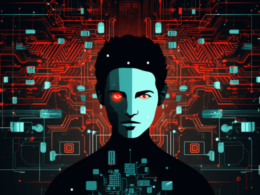Over the last year, the field of AI has gained significant attention and raised important questions about its impact. Is AI just a passing fad, or does it have the potential to enslave humanity? The answer is not straightforward. On one hand, we have seen impressive achievements like ChatGPT passing the bar exam, potentially threatening the job market for lawyers. However, we have also witnessed flaws in AI technology, such as ChatGPT fabricating arguments in a court case. These developments underscore the need to address key concerns about AI’s trustworthiness, accuracy, and bias.
Trust in AI: Verifying Models
One of the biggest challenges with AI is ensuring that we can trust the models being deployed. How do we know if an AI model is reliable, free of bias, and won’t cause harm? There are several methods to verify AI models:
- Hardware inspection: This involves physically examining the computing elements to identify any chips used for AI. It helps ensure that the hardware is trustworthy and hasn’t been tampered with.
- System inspection: By analyzing the model’s software, we can assess its capabilities and identify any functions that should be off-limits. This inspection separates the system’s quarantine zones, protecting sensitive information and detecting AI processing.
- Sustained verification: After initial inspection, sustained verification mechanisms ensure that the deployed model remains unchanged and untampered with. Techniques like cryptographic hashing and code obfuscation are used to detect changes without revealing sensitive data or code.
- Van Eck radiation analysis: This method analyzes the radiation emitted by a system while running. Changes in radiation patterns can indicate the presence of new AI components without revealing confidential information.
Trust in AI: Verifying Training Data
The data used to train AI models is crucial, as it shapes how the models interpret and respond to new inputs. Verifying the training data is essential to avoid biases and ensure accuracy. For example, imagine training an AI model to evaluate potential employee candidates based on past performance. If the training data only includes high-performing male employees, the model may have a biased view that men perform better. To address this, verification methods can be utilized:
- Zero-knowledge cryptography: Employing this technique to prove that training data hasn’t been manipulated provides assurance that AI models are being trained on reliable and tamperproof datasets from the beginning.
Verifiability and transparency are fundamental for building safe and ethical AI systems. Business leaders should familiarize themselves with verification methods and their effectiveness in detecting AI use, model changes, and biases in training data. While verification is not a panacea, it significantly contributes to ensuring the intended functionality of AI models and detecting any unexpected evolutions or tampering. As AI increasingly integrates into our daily lives, it is imperative that we establish trust in its capabilities.
“Trust in AI is built on verifiability and transparency. Zero-knowledge cryptography provides assurance that data used for training AI models hasn’t been tampered with, leading to more reliable and ethical AI.”
Scott Dykstra, Cofounder and CTO for Space and Time










